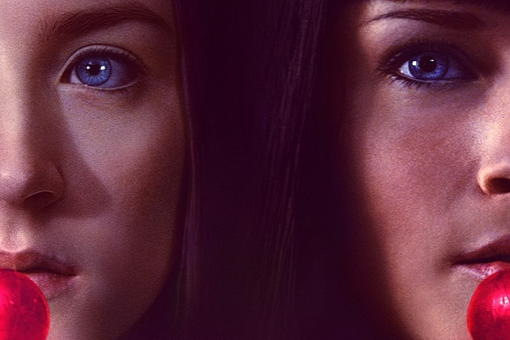Sign up for the
TSL Newsletter
and get $50 off Final Draft 12
By Meredith Alloway · June 4, 2013

Not only did Geoffrey Fletcher win the first ever “Best Screenplay” Oscar awarded to an African American for Precious, it was also his first feature script. He continued to garner success, receiving awards at Sundance, Toronto and being named as one of Variety’s “10 Screenwriters to Watch.” Now with Violet & Daisy, he’s both writer and director. The film centers around two young girl assassins, Violet (Alexis Bledel) and Daisy (Saoirse Ronan) who are sent on an assignment to kill a man named Michael (James Gandolfini). Their plan goes sour when they question not only their motif, but also their relationship as a duo.
We had a moment to get to the bottom of his directorial debut. I had to know where the idea for the gun-slinging, lollipop killers all started and how he continues to explore themes of feminism, youth, and liberation in his second screenplay.
ATW: Two teenage assassins; it definitely catches your attention. So where did the idea for the script all begin?
F: I’ve always loved the crime genre and the coming of age story. I thought it would be great to combine the two while following two hit women. It’s a fable and some of the violence in it is of a heightened nature. I think that if you look at many fables throughout the ages, a great many of them have a degree of violence and the violence in this film is relativity spare, and ultimately condemned. There are larger themes that run through this film, about friendship, love, materialism, celebrity fixation. People will be surprised because on the surface they may think that the film deals with far fewer things than it does and far less humanity.
ATW: The language of the girls is stylized with a sort of 1950s sitcom vocabulary. They say things like “tuckered out”, “fella” and “gee.” What was the intention in using this sort of language?
F: These young women start very much in a reality of their own that they’ve constructed that’s out of step with the rest of the world. They speak very differently to other characters particularly when they are apart. Many elements of this film change from the beginning to the end. The visual style, the dialogue, the wardrobe; the color palette. It all moves towards creating a very distinct and dynamic journey.
ATW: What ultimately does the evolution of all of these elements move towards? Where is the journey’s end for the girls?
F: I think that we have some characters that are looking for validation through things outside of themselves and they learn that only through meaningful connections with other human beings and honesty with themselves can they begin to find their own humanity.
ATW: And you had some incredible young actresses who were capable of that sort of vulnerability! What compelled you in Alexis & Saoirse’s casting?
F: Saoirse was someone who everybody knows how brilliant she is. Alexis has legions of admirers and for good reason. I don’t think that anybody has seen all that they’re capable of though, however obvious it is that they’re capable. You’ll see these characters in ways you’ve never seen them before. Watching Monique in Precious reinforced this idea for me that all people need is a chance.
ATW: When Daisy is in the hardware store and the cops show up after the shooting she asks one of them, “How do you know I wasn’t in on it?” The cop assumes because she’s a girl she couldn’t be a criminal. Are you promoting the idea that females are capable of killing?
F: If you were to ask Violet and Daisy if they were feminists, they’d say yes! However feminism is defined, it certainly can’t be by making mistakes common to men. I think that after the journey they take; they may be beginning to understand that real power isn’t posturing.
ATW: Daisy tells Michael, “Heaven is probably a place where people don’t care what you look like. People don’t have bodies, they’re just essences. And everything’s free or at least wholesale.” Both Precious and Violet & Daisy explore this need to break free of earthly limitations like body perception, whether it is weight or the female sex, and then wealth and the lack of it. What makes you interested in exploring these?
F: I think that a lot of us have an active imagination and think about and speculate on things beyond our reach. Sometimes that influences [our] earthly actions. Sometimes those thoughts tell us who a character is; they open a window into the character. Have you ever known someone for some time and they make one statement and all the sudden it makes you re-think many things you know about them? As human we have many contradictions.
ATW: You continue to explore this theme of human contradiction and crime in your next project Attica! It’s a re-creation of the 1971 Attica state prison uprising. Doug Liman (Mr. & Mrs. Smith; The Bourne Identity) is directing!
F: We’re developing the story, and we’ve done a lot of homework so far and visited the prison. This is a project that Doug’s talents are perfectly suited for. It was a huge event in American history whose implications are still meaningful today.
Violet & Daisy opens June 7th!